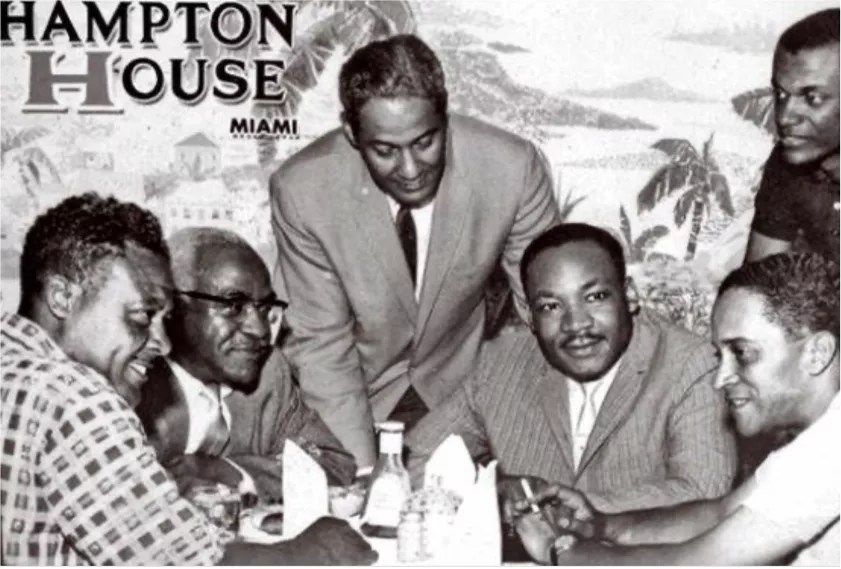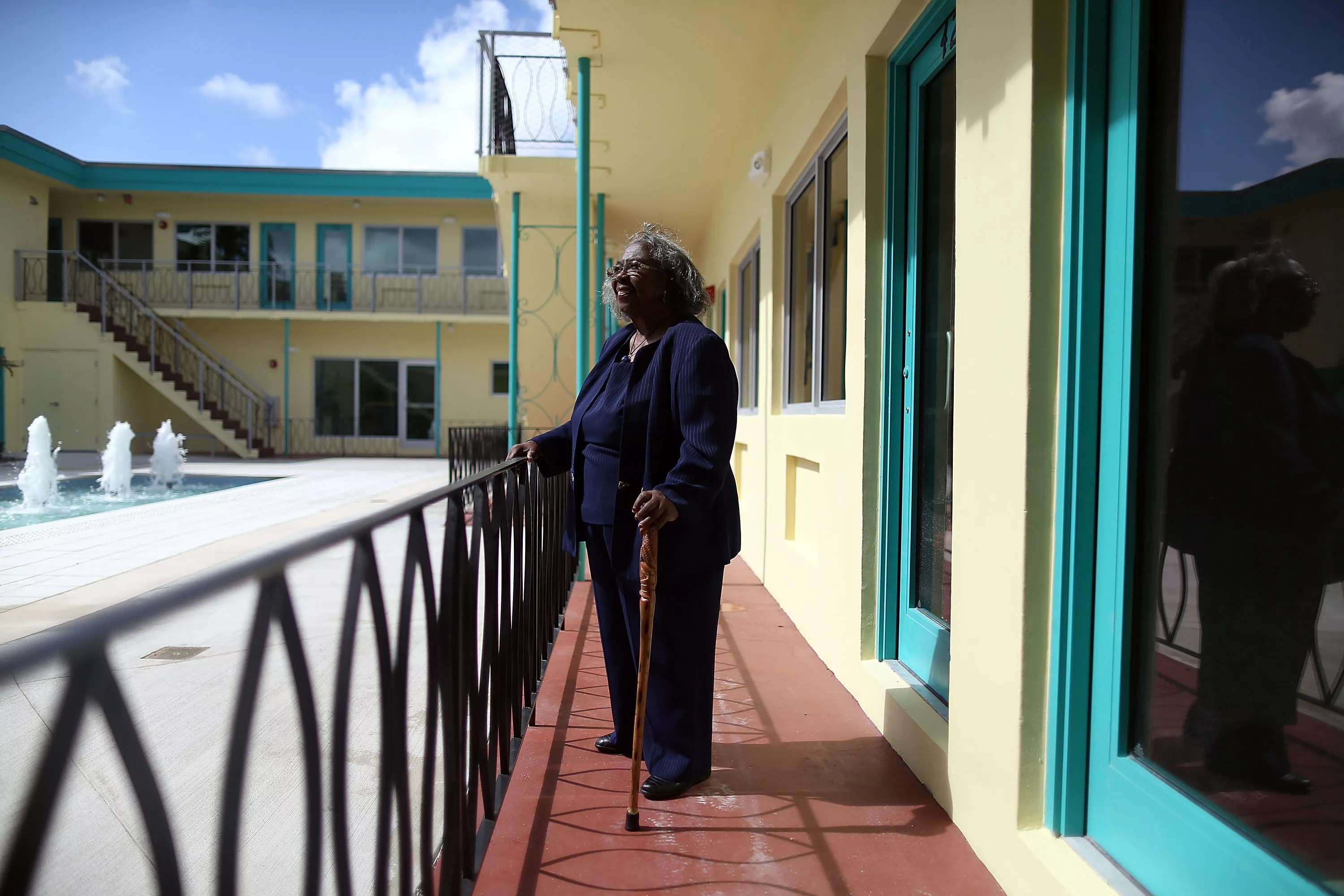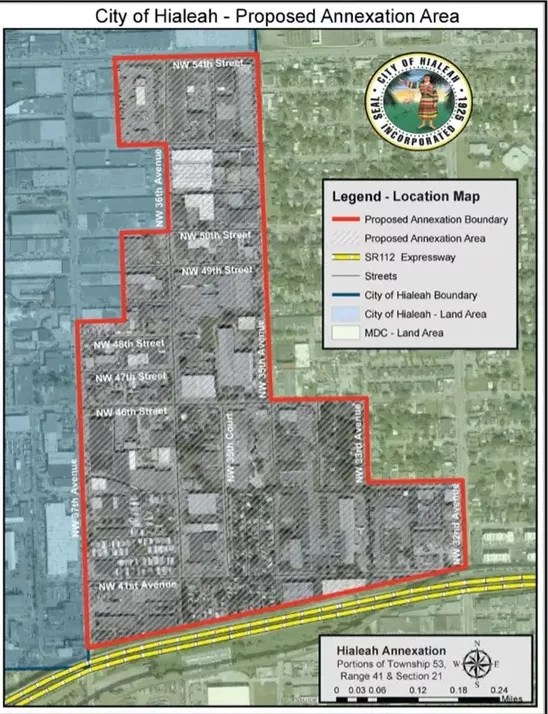
Photo by Historical Hampton House, Brownsville

Audio By Carbonatix
Update published 5/24/2023 10:35 a.m.: Hialeah Mayor Esteban “Steve” Bovo announced at a May 23 city meeting that Hialeah has halted its plan to explore annexation of a section of the historically Black Brownsville neighborhood. “This is an issue on our end that is no longer being pursued. It is dead,” Bovo said. Former Florida House Rep. James Bush and Kenneth Kilpatrick, head of the Brownsville Civic Neighborhood Association, thanked the mayor and the city council, saying that the decision to back off the plan was a welcome relief. “I can tell you your move tonight has allayed a lot of frustration in the Brownsville community,” Bush said.
Our work is funded by readers like you who make voluntary gifts because they value our work and want to see it continue. Make a contribution today to help us reach our $30,000 goal! The original story follows below.
This year, make your gift count –
Invest in local news that matters.
Hialeah’s proposal to annex a section of the Brownsville neighborhood of unincorporated Miami-Dade County is stirring cultural and political tensions in the predominantly Black community, where recent public meetings boiled over with residents’ complaints of looming gentrification.
Brownsville residents and community leaders have come out in droves to oppose the proposed annexation, with some expressing fears that the move could mark the beginning of a larger land grab through which the historic Black neighborhood will lose its commercial land and cultural identity. Brownsville Church of Christ minister Harrell Henton, former Florida House Rep. James Bush, and preservationist Enid Pinkney are among those who’ve spoken out against annexation.
“Please do not let anybody take your heritage. They’re not going to be in sympathy with your culture and the legacy that has been passed down from generation to generation in this community,” Pinkney said at a recent press conference.
“So we have a rich history,” added Pinkney, who spearheaded the formation of a trust to preserve the Historic Hampton House, a famed Brownsville cultural nexus under segregation. “We need to learn it so we can defend it.”
Though the annexation proposal is in its early stages and has not yet been approved by the Hialeah City Council, its location is drawing attention: It’s a 150-acre chunk of Brownsville’s west edge, centered near NW 47th Street and abutting Factory Town, Hialeah’s sprawling new concert complex.
The area is mostly a commercial and industrial district, along with some residential mobile homes.
“The proposed annexation area would be part of the city’s plan to further develop a burgeoning entertainment district that would be adjacent to the city’s east end,” a representative from Corradino Group, a consulting firm hired by Hialeah last year, said at an April 25 city council meeting.

Preservationist Enid Pinkney is among the leaders in Brownsville who would prefer not to have the City of Hialeah annex a chunk of the community.
Photo by Joe Raedle/Getty Images
Kenneth Kilpatrick, president of the Brownsville Civic Neighborhood Association, contends that annexation threatens to strip Brownsville of financial development opportunities and eat away at the community’s history.
“Industrial areas are major economic tools that power neighborhoods and cities,” Kilpatrick tells New Times. “The area proposed to be annexed would significantly strengthen Hialeah’s economic vitality while decimating Brownsville’s economic potential.”
Kilpatrick says he fears Brownsville’s future may mirror that of Seminola, one of South Florida’s first Black communities that’s now part of Hialeah. Developed in 1924 so Black laborers building the Hialeah Park racetrack could live nearby, the 20-block neighborhood has seen its Black population dwindle over the past few decades.
“The City of Hialeah has not fared well with nurturing the African-American community of Seminola. This once-thriving African-American community within Hialeah’s city limits is now being gentrified, with less than 20 percent of the current population being African-American today,” Kilpatrick adds. “And there is a well-founded fear that the current annexation effort could result in future residential takings to the east of the industrial district.”
What is now Brownsville was farmland when it was settled by a white man named W.L. Brown. The neighborhood first appeared on a county plat map in 1916, when Brown registered the two-square-mile patch of land as “Brown Subdivision,” according to archived Miami-Dade Public Library System records.
It became known as Brownsville, or as locals call it, “Brown Sub.”

City of Hialeah annexation map for Brownsville
The Black population blossomed in the community between the 1940s and the 1960s. Kilpatrick notes that Brownsville was a key destination for civil-rights icons and entertainers who visited Miami during the segregation era, including Dr. Martin Luther King Jr., Malcolm X, Sammy Davis Jr., and Billie Holiday.
At the April 25 city meeting, Hialeah Councilman Jesus Tundidor insisted that the proposed annexation is in the review stage and the city is still weighing its options.
“It’s not and never will be our intent to break up any type of community, break up any type of historical preservation or heritage,” said Tundidor, who sponsored the annexation proposal. “We’re not here to blindside anyone; we are here to work with you.”
The Corradino Group’s presentation indicated that the City of Hialeah would take in about $850,000 annually in tax revenue from the annexed area, while the cost of providing city services to the area would exceed $4 million in the first year after annexation and $1.8 million in the second year.
If the space is developed into an entertainment district, as the Corradino Group suggested it may be, property values would be poised to increase and provide potential surplus tax revenue for the city.
In terms of area, the parcel represents about one-tenth of Brownsville’s 2.28 square miles.
Hialeah’s population consists of 92.6 percent white residents, the vast majority of whom also identify as Hispanic. The World Population Review called it the “whitest city in America” in terms of self-reported race.
According to U.S. Census data, Brownsville’s population is more than 50 percent Black.
Aside from language, racial, and cultural differences, Hialeah and Brownsville are divided by red and blue: Hialeah is dominated by conservative, Republican Cuban Americans, while Brownsville’s populace leans more to the left politically.
“Brownsville needs all the economic gain that we can get,” Henton, the Brownsville Church of Christ minister, told the Hialeah council. “We are here today because we’re just tired – tired of the idea that anyone can take advantage of our community, tired of finding out that we are not appreciated, that we are just a number, not families, not churchgoers, not hard-working fathers and loving mothers.”
The public comment portion of the meeting became heated when one man told city leaders to take a 300-mile journey south.
“Go back to Cuba. All of y’all need to go back to Cuba,” the unidentified man proclaimed before being led out by police.
Miami-Dade’s county code requires a referendum vote from residents on annexation if the area has more than 250 resident electors or is more than 50 percent developed residentially. Otherwise, the area can be annexed with no vote, via an agreement with Miami-Dade, which could include transfer fees.
The Hialeah annexation proposal includes the area from NW 54th Street to the north; NW 37th Avenue to the west; NW 35th, 33rd, and 32nd avenues to the east; and State Road 112 to the south, according to a city report obtained by New Times. The initial annexation map was amended to exclude a church and a neighborhood of single-family homes near the eastern annexation boundary.
“We should never allow ourselves to be intimidated by somebody or threatened by anybody, ’cause that’s just not gonna jibe,” Hialeah Mayor Esteban “Steve” Bovo Jr. said at the close of the nearly three-and-a-half hour council meeting. “Our obligation is to the taxpayers of Hialeah.”